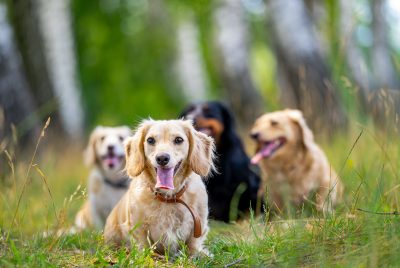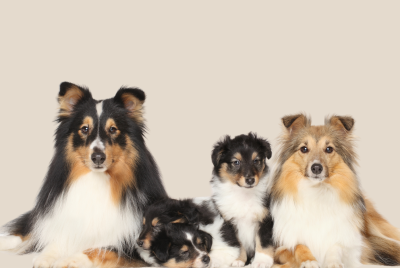How Can You Train a Dog Not to Bite?
Dogs sometimes bite for various reasons. Most of the time, it’s because they feel threatened or afraid. Biting is a natural dog behavior, but it’s important to teach your dog not to bite to keep everyone safe. The good news is that with positive reinforcement training methods, you can train your dog not to bite. Let’s figure out how can you train a dog not to bite!
Training a dog not to bite takes time and patience, but it is possible. This article will explain the steps you need to take to teach your dog not to bite. We’ll cover things like reading your dog’s body language, managing situations to prevent bites, using rewards to encourage good behavior, and responding appropriately if your dog does bite.
Understand Why Your Dog Bites
The first step in training your dog not to bite is understanding the reasons behind the behavior. Common reasons dogs bite include:
Fear or Anxiety
When dogs feel afraid or anxious, their natural reaction is often to bite. They may bite out of self defense if they feel scared and cornered. Things like loud noises, unfamiliar people, and quick movements can trigger a fear response.
Protection
Dogs may bite to protect something they value. This could be a toy, treat, human family member, or their puppies. Protection biting stems from their natural instinct.
Poor Socialization
Puppies that don’t meet and have positive interactions with a variety of people, dogs, and environments during their critical socialization period often become fearful biters as adult dogs.
Medical Reasons
Sometimes dogs bite due to an underlying medical condition or injury causing them pain or discomfort. Ear infections, arthritis, dental problems, injuries, and other issues can lead to pain induced aggression and biting.
Play
Especially with puppies, play biting is very normal. Puppies explore things with their mouth and needle sharp teeth. But this needs to be discouraged early to prevent bites as they grow larger.
Warning
Some dogs will give warning bites or “air bites” where teeth touch skin but don’t break it. This is their way of communicating “back off” before resorting to a full bite.
Read Your Dog’s Body Language
To prevent bites before they happen, it’s essential to understand what your dog is trying to communicate through body language. Subtle changes can signal rising anxiety, fear, or aggression before a bite. Things to look for include:
Freezing
A dog that suddenly becomes immobile and stops wagging its tail is feeling uncomfortable about something in their environment. Freezing indicates anxiety.
Lip or Nose Licking
Frequent lip licking or nose licking can signal anxiety or stress, especially if the situation does not involve food.
Yawning
Yawning when not sleepy is a sign of stress. Like humans, dogs yawn when nervous.
Tail Lowered or Tucked Between Legs
Lowered tails or tails tucked between the legs indicate fear. It signals they want to remove themselves from the situation.
Raised Hair
The hair along a dog’s neck and back standing up indicates heightened emotion. It’s often associated with fear and anxiety.
Stiff Body
A stiff, immobile body posture is a warning sign. The dog is poised and ready to bite. This is a critical warning before a bite.
Learning to spot these subtle signals allows you to address rising anxiety and remove or modify situations before biting occurs.
Manage Situations to Prevent Biting
Once you understand why your dog bites and what body language communicates their emotional state, you can start managing environments and situations to prevent bites. Useful management techniques include:
Provide a Safe Space
Dogs feel more secure with a safe space they can retreat to. This can be a crate with a blanket over it to provide a quiet, darkened den area. Having access to “their space” allows the dog to relax and prevents fear induced defensive biting.
Use Baby Gates
Install baby gates so you can separate dogs from guests. Dogs often feel protective of their home turf when visitors arrive. Baby gates allow your dog to see, hear, and smell visitors without biting access. It also allows fearful dogs to move away.
Muzzle Training
Muzzle train your dog so they associate the muzzle with positive things (through reward based training). Use the muzzle during walks or situations with strangers to prevent bites due to fear or anxiety. Proper fitting is essential for safety and comfort.
Avoid Direct Eye Contact
Dogs can view direct eye contact as threatening. Avoid staring at your dog if they seem nervous, fearful, or anxious. Also teach kids not to stare into a dog’s eyes.
Have Treats on Hand
Carry tasty treats with you. If you notice your dog getting anxious in a situation, you can offer treats to create positive associations with triggers that normally cause biting. This can help shift the dog’s emotional response before anxiety escalates to biting.
Through managing situations, you can prevent the underlying anxiety, fear, frustration, pain and other problems causing biting. This keeps everyone safe while you implement reward based training.
Use Positive Reinforcement Training
To train a dog not to bite, positive reinforcement training is the most effective approach. Positive reinforcement means rewarding behaviors you want to encourage. To implement this:
Reward Calm Behavior
Carefully observe your dog and watch for moments when they are calm and relaxed around situations that normally trigger anxiety and biting. It may only last a second at first. The moment you see this, offer high value treats and praise. Over time, reward calm behavior in progressively more challenging situations.
Encourage Alternate Behaviors
If your dog tends to bite when scared, teach them an alternative behavior instead. For example, teach them to sit and stay when a stranger approaches. Reward with treats when they perform this behavior. This redirects them away from biting.
Use Distance to Build Tolerance
If your dog lunges or bites when seeing another dog during walks, increase distance and reward for calm behavior. As they become comfortable, gradually decrease distance while continuing to reward calm responses. Over many sessions, build their tolerance for getting closer without reacting.
Take It Slow
It’s important not to expose dogs to situations they aren’t ready for in training. Introduce new triggers very gradually to set your dog up for success. If they start reacting again, create more distance and work in smaller steps.
Stay Consistent
Ask all family members to participate in training so you are consistent. Everyone should reward and reinforce the same positive behaviors around situations that lead to biting. Consistency from the whole “pack” provides clarity.
Positive reinforcement training helps promote relaxation and emotional control. With time, the dog can learn triggers don’t necessarily lead to bad things, shifting their perception.
Respond Appropriately if Your Dog Bites
While actively managing situations and training alternate behaviors is ideal to stop bites, you need an appropriate plan to respond if one occurs. Here are tips if that happens:
Stay Calm
If your dog bites, it’s essential to stay as calm as possible. Dogs pick up on human emotions easily. If you become angry, anxious, high pitched, or tense, it can further agitate them, causing more biting.
Stand Still
Your instinct may be to jerk away when bitten. But sudden movements can intensify biting if dogs interpret it as prey behavior. Stand perfectly still instead. Once they release (which may take 15-20 seconds), slowly back away without turning your back.
Give Them Space
After a bite, give dogs ample space instead of resuming activity. Put them in their crate or another separate room so everyone can decompress. Trying to immediately return to normal interaction keeps adrenaline high.
Assess the Cause
Carefully analyze what triggered the bite once everyone relaxes. Were there subtle body language warnings you missed? What can you do differently to prevent this next time? Doing this without blame helps you continue progress.
Consult a Trainer
If biting persists or you’re unsure how to improve, consult a professional positive reinforcement dog trainer. They can assess your dog’s body language, troubleshoot training, and provide hands-on guidance tailored to your situation. This can help get biting under control.
While bites can happen even with proper training, remaining calm, giving space, and never physically punishing dogs creates the best opportunity to reduce future incidents.
Conclusion
Biting is a natural canine behavior, but one that must be discouraged through humane, rewards-based training techniques. By understanding why dogs bite, learning to read body language, proactively managing environments, rewarding alternate behaviors, responding appropriately after bites, and seeking professional help if needed, you can teach dogs not to bite.
While biting may take time and patience to overcome, through consistency, an understanding approach and positive reinforcement, dogs can learn better ways to communicate and coexist safely with their human families. Implementing the methods covered in this article will set you on the right path to train your dog not to bite.




